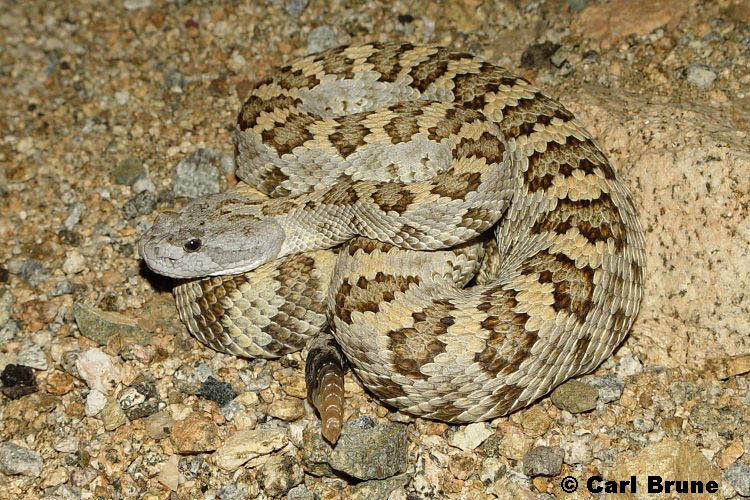I was really thinking the snake was a mojave. Looked like all the ones I've seen, but the differences are pretty subtle. Beautiful snake though. I usually move snakes within an area that would still be within their normal territory and I know my friend would make sure that any snakes he removed from a den area were returned to that den area should they not adapt to captivity well. They were all marked to be sure that he knew which came from what. I rarely have to move a snake more than a few hundred yards either because although there might be homes around, they are usually on farm properties and I can put them where no one will easily find them.
The difference between many rattlers that share habitat are subtle, but once you know what to look for, it gets fairly easy. There are even visual cues between different subspecies if you know what to look for.
For example, the Mojave Desert Sidewinder has a brown rattle matrix(the lowest rattle button), while the Colorado Desert Sidewinder has a black matrix. Otherwise, the two are virtually identical. Between a Southern and a Northern Pacific, sometimes the differences are only visible as young, when the
helleri has a yellow-green tail and the
oreganus does not, and they have even been elevated to individual species at this point.
Then there are the times when you look at a rattler, and it looks like one thing, but the location should mean it can't be, so you have to make a best guess given habitat ranges. That actually happens frequently around here, with people misidentifying Northern Pacifics as Great Basins. With more than 300 miles and a mountain range between the 2 nearest habitat zones...it isn't likely to be the "wrong" one...
This one--photo courtesy of
CaliforniaHerps.com
Has been identified by very knowledgeable herpers as a Northern Pacific, a Great Basin, and a Panamint. Given the location where it was found, it could only be a Panamint, but the color and pattern is easily mistaken by people who know what they are looking at...
Ain't field identification fun?









